Gandhi Museum

Beez Neez now Chy Whella
Big Bear and Pepe Millard
Thu 11 Apr 2019 22:37
|
Gandhi Museum or Smriti
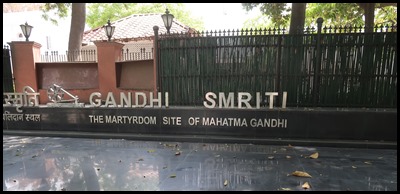  We walked through the gates of the museum and stopped in front of an
information board. Another read: Gandhi Smiriti. This national
memorial honours the virtues of truth, non-violence, unity and equality. The
hallowed house, which treasures many cherished memories of the last few days of
Mahatma Gandhi now forms a part of our national heritage. The walls of the
building reverberate his message, “All men are brothers”.
Gandhi’s life and teaching have
left an indelible mark on human history and the purpose of preserving this
memorial is to foster and propagate his ideals.
On the morning of September 9.
1947, Gandhi arrived in Delhi from Calcutta to purge the city of the
communal virus and to “do or die”. He planted himself alone, amidst the
raging torrent and listened to the tales of woe of the embittered and the
uprooted. He had stayed here several times in the past but the last 144 days of
his life spent here are important in the nation’s history. He has left a rich
legacy of speeches and writings.
The epic life of the father of
the nation ended here on Friday, January 30, 1948. He fell a martyr to the
bullets of an assassin on the prayer ground with Rama’s name on his lips at 5.17
pm.
He was the victorious one in
death as in life.
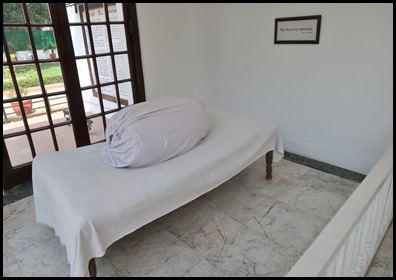 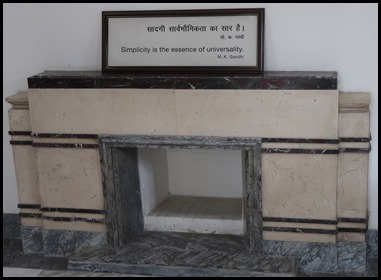 We stepped into
Gandhi’s bedroom, the quote on the wall reads “My life is my
message”. The plain fireplace with the quote “Simplicity is the essence of
universality”. Spartan yet comfortable.
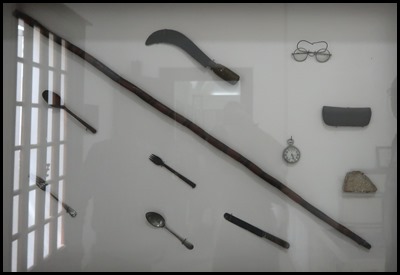 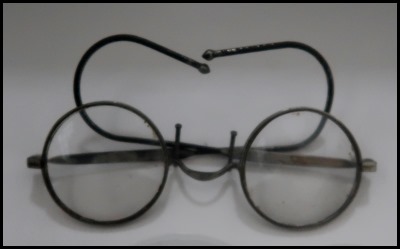 In a display case on the wall are his
worldly possessions and of course in the top right
corner – those spectacles.
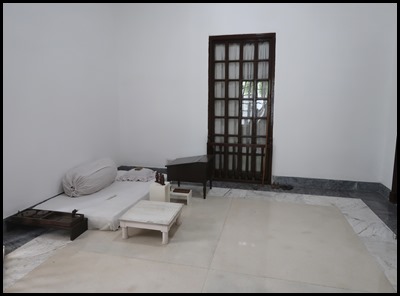 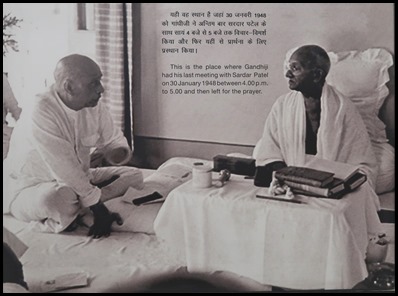 Gandhi wrote
and read in this room and it is the place where Gandhi had his last meeting with Sardar Patel on the 30th of January 1948
between 4.00 pm. and 5.00 and then left for the prayer.
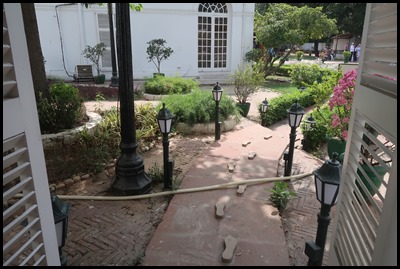 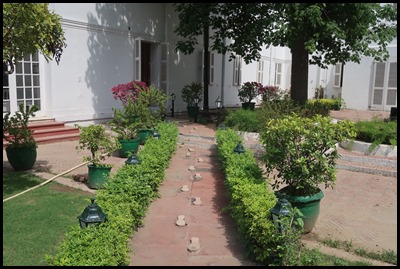 Gandhi left for
prayer through this window, we nipped outside to see the window from the outside.
 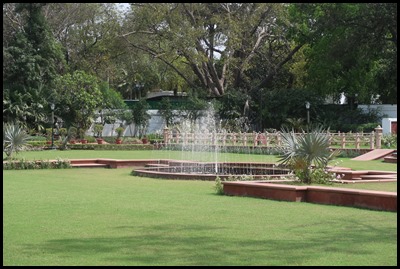 He took the path and his footprints are
marked, a beautiful garden to his
left.
 Looking back
toward the house, now museum.
 Then up these
steps.
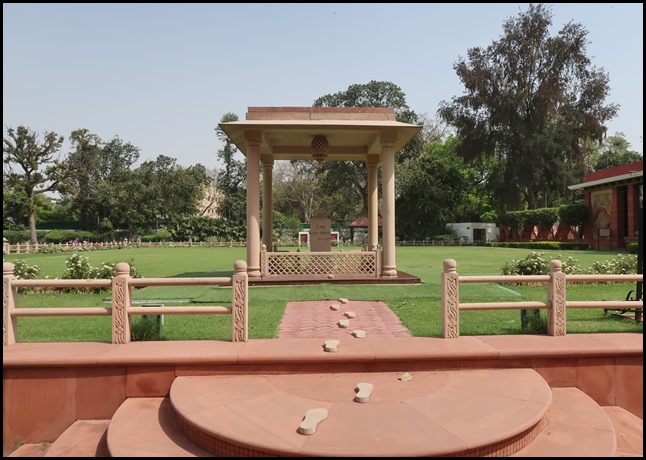 A gazebo has been put over the spot where he fell.
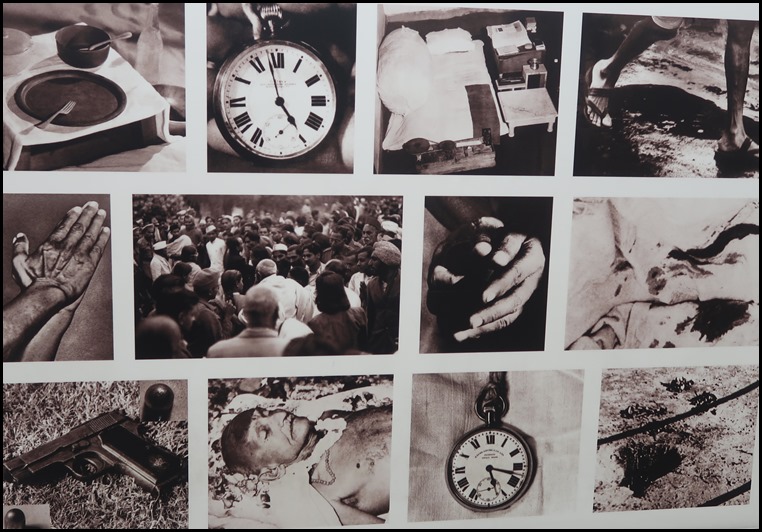 A collage on the
wall of the museum.
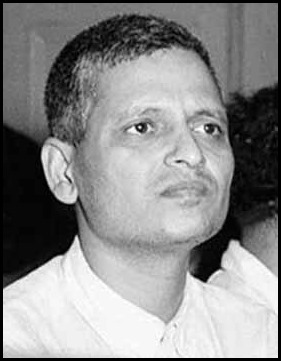 Nathuram
Vinayak Godse (19th of May 1910 – 15th
of November 1949) was a right-wing advocate of Hindu nationalism organisation
called Rashtriva Swayamsevak Sangh (RSS). He shot Gandhi in the chest three
times at point-blank range. He believed that Gandhi favoured the political
demands of India's Muslim’s during the Partition of
India.
He plotted the assassination with Narayan Apte and six others. After a trial that lasted more than a year, Godse was sentenced to death on the 8th of November 1949. Although pleas for commutation were made by two of Gandhi's sons, Manilal and Ramdas, they were turned down by India's prime minister Jawaharial Nehru, deputy prime minister Vallabhbhai Patel, and the Governor-General Chakravarti Rajajopalachari. Godse was hanged at Ambala Central Jail on the 15th of November 1949. 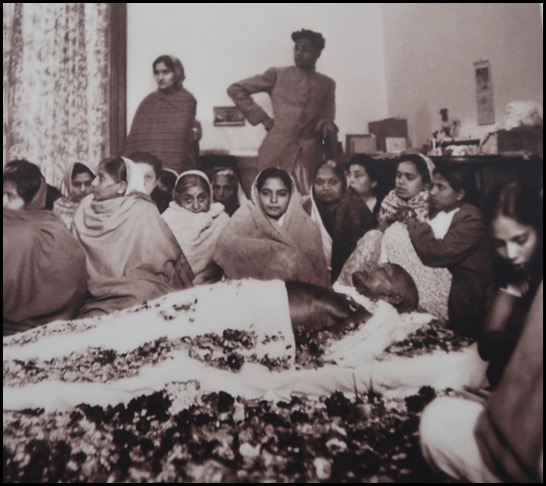 The Last Journey. January 31,
1948. With the dawn arrived ‘the most unbearable poignant moment for us all of
us’, Devadas Gandhi’s youngest son wrote later. They had to remove the large
woollen shawl and the cotton shoulder wrap which Bapu was wearing for warmth
when he was shot. These pure white clothes showed clots and blotches of blood.
As they unfolded the shawl the shell of a cartridge dropped
out.
In the early hours of the morning
disciples washed the body of Gandhi according to
Hindu rites and placed a garland of handspun cotton strands and a chain of beads
around its neck. Roses and rose petals were strewn over the blanket that covered
all but the head, arms and chest. “I asked for the chest to be left bare, “
Devadas explains. “No soldier ever had a finer chest than Bapu’s” A pot of
incense burned near the body.
During the night the chassis of a
dodge 15-hundred-weight army weapon-carrier had been replaced by a new
superstucture with a raised floor so that all spectators could see the body in
the open coffin. Two hundred men of the Indian Army, Navy and Air Force drew the
vehicle by four stout ropes. The motor was not used. Non-commissioned officer
Naik Ram Chand sat at the steering wheel. Jawaharlal Nehru, Sardar Patel several
of Gandhi’s young associates rode on the carrier.
 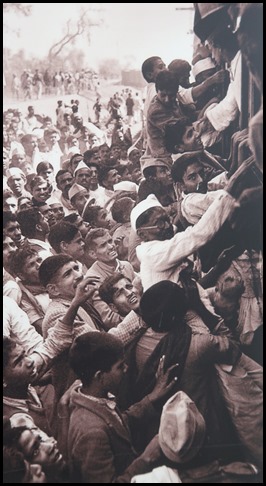 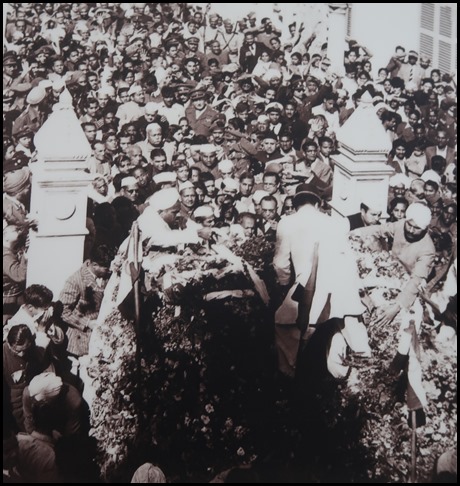  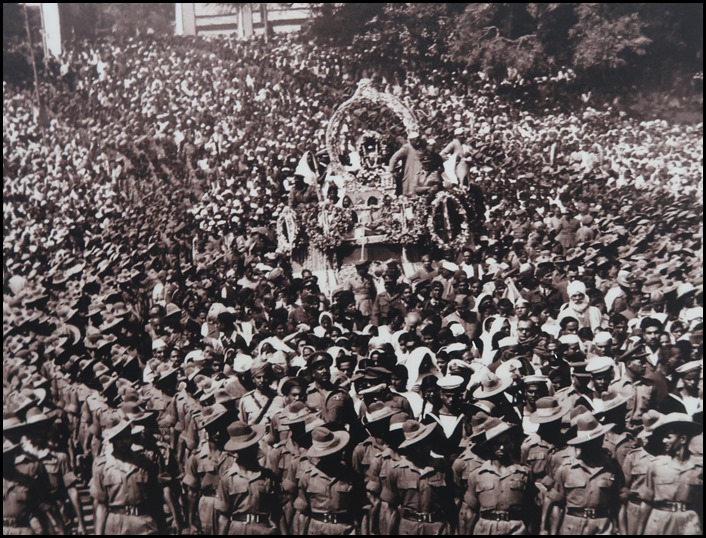 The cortege two miles long, left Birla House on Albuquerque
Road in New Dehli 11.45 am., and, moving forward inch by inch through the dense
masses of humanity, five and a half miles away, at 4.20 pm.
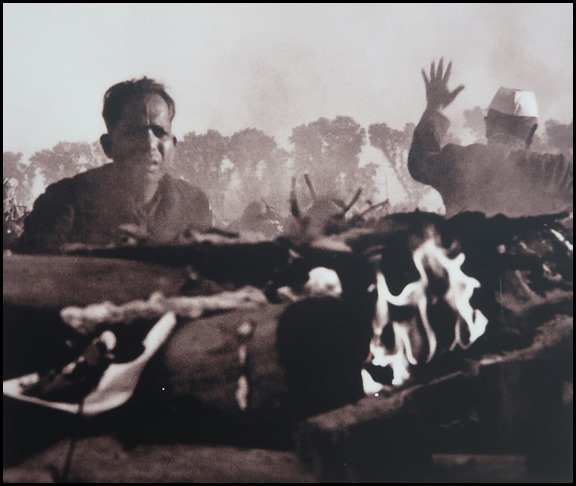 At 4.45 pm., Ramadas set fire to
his father’s funeral pyre. The logs burst into flame
against the setting sun on the banks of the Yamuna. A groan went up from the
vast assemblage. People wailed. With elemental force the crowd surged towards
the fire and broke through the military cordon. But in a moment they seemed to
realise what they were doing and dug in their bare toes and stood still in
silent prayers – a final farewell to the Bapu – Mahatma Gandhi who slowly passed
into ages as his earthly remains merged with the five
elements.
 The nation stood still and silent
for the man who gave it her freedom and her flag. A great wave of grief swept
over the world.,,, The United Nations Organisation lowered its flag.... People
of all races felt as one human-family in mourning....
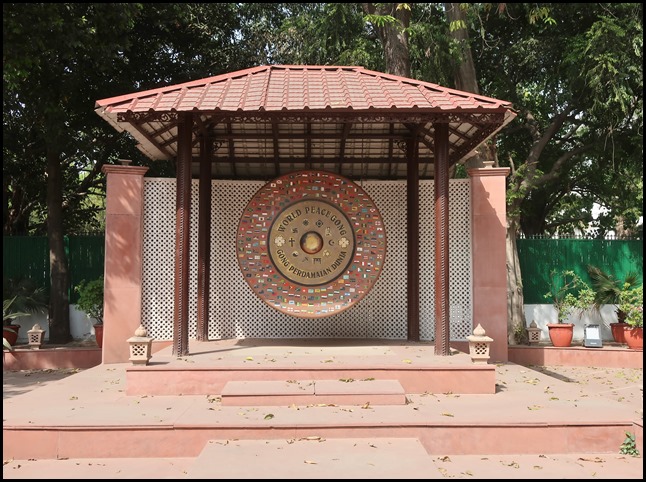 The World Peace
Gong in the museum garden and two carved
boulders below.
  ALL IN ALL QUITE A
MAN
A GREAT MUSEUM FOR A GREAT
MAN |